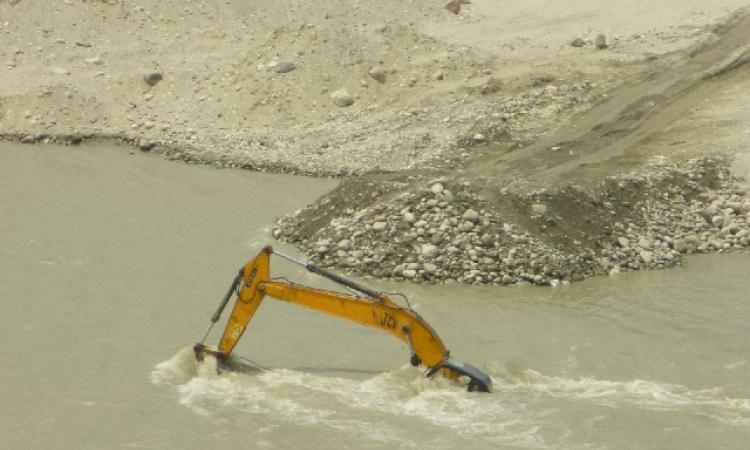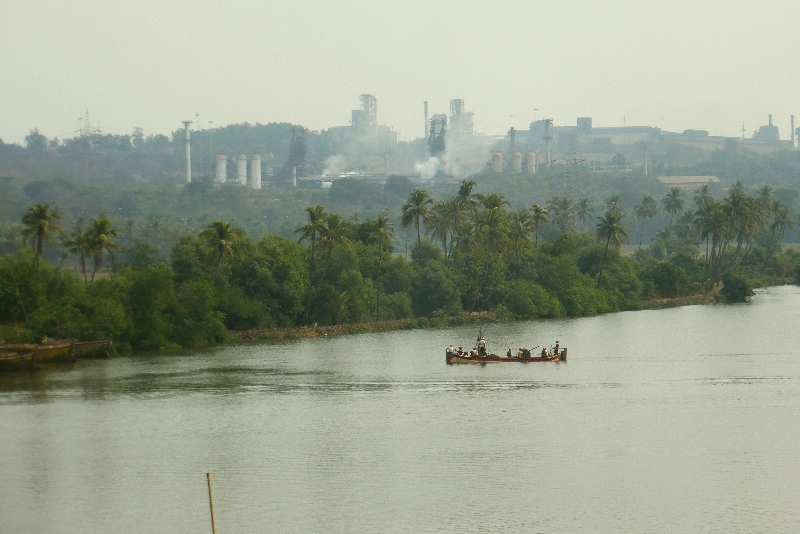
Saileena Sarkar's introduction to the East Kolkata Wetlands began as soon as she moved to the city. She says, “The Kolkata wetlands have been a point of interest since I came to the city. This was where we went for our zoology tuition group picnic, and the wetlands are something every zoology student in Kolkata visits to learn about. I have friends who stop to buy vegetables from the roadside.” The wetlands produce food for the city, support the livelihoods of 32 villages, mitigate floods and treat Kolkata's sewage.
And that is why Saileena was surprised to read that Sovan Chatterjee, the mayor of Kolkata has decided to permit construction in the wetlands. She recalls, 'Imagine the horror of knowing that the government wishes to destroy what saves us from the monsoon fury year after year. And this comes right after Chennai floods!'
Chatterjee is not alone in his apparent disdain for the value of healthy ecosystem. The last two years have seen several changes in India's environmental laws. Is there a severe disconnect between the Ministry of Environment and the citizens whose ecological heritage it is supposed to guard?
Here, we consider the three major policy changes that have been discussed this year.
Wetlands: In March 2016, the government of India put into process a drastic change to the existing Wetland (Conservation and Management) Rules which were applicable since 2010. These rules required that states list their wetlands, to be regulated by the centre. There has been considerable debate in the country over the states' negligence towards wetlands.
Environmentalists were therefore stunned to see that the new draft devolved all power of management and conservation of the wetlands to the states. Environmental lawyer Ritwick Dutta was quoted in a newspaper article as saying, “It makes very little sense to grant states, which have so far not been adhering to the rules that are already in place, all the power to notify wetlands.”
The removal of the Central Wetland Regulatory Authority (CWRA) means the citizens have no means of registering their grievances against improper management of wetlands. The draft rules also make it difficult to pin states down to wetland conservation. The 2010 rules prohibited seven activities and required an Environment Impact Assessment (EIA) followed by state permission before certain regulated activities, like aquaculture, are carried out.
The new rules neither prohibit any activities, nor do they require an EIA to be carried out. In fact, the state no longer has any prohibitory or punitive powers concerning wetlands. Instead, the state is merely asked to make “necessary directions for conservation and sustainable management of wetlands”.
Coastal areas: When it comes to the rules for wetlands, the Ministry for Environment, Forests and Climate Change (MOEFCC) at least followed the letter of the law by making a draft available to the public for comments. In the case of the laws governing coasts, it did not offer its citizens that courtesy.
The coastal areas are governed by the Coastal Regulation Zone (CRZ) notification of 2011. This notification, which divided the coasts into various zones and allowed restricted development within 500 metres of the high tide line, was in itself a diluted version of the 1981 directive which categorically prohibited all activities in that area.
In June 2014, the MOEFCC formed a committee headed by Shailesh Nayak to “review the issues relating to the coastal regulation zone, 2011”. After consultations with state governments, the Nayak committee presented its findings to the then environment minister, Prakash Javadekar, in the beginning of November 2014 and submitted its report in January 2015.
The report was never made public. The ostensible reason for this was that the report had not been approved by the government.
Eighteen months later, in June 2016, it was released to Kanchi Kohli, a researcher and campaigner working on environment governance in India, following an RTI appeal. It was then that the government's sleight of hand was revealed.
 Since the end of 2014, the MOEFCC has issued eight amendments to the CRZ notification. All these amendments are concerned with permitting activities that were prohibited earlier--such as reclamation of land for roads, construction of memorials, and removing restrictions on the height and location of resorts and hotels. The first of these amendments was issued on November 28, 2014, weeks after the Nayak committee’s presentation. It devolves powers to State Environment Impact Assessment Authority (SEIAA) to appraise projects not listed in the EIA Notification, 2006 instead of this responsibility resting with the ministry. The Centre for Policy Research-Namati Environmental Justice Program, a network of grassroots legal professionals who research environment law , has analysed the amendments passed after November 2014. Each of these is as per the recommendations of the Nayak committee--a report that the ministry claims to not have approved.
Since the end of 2014, the MOEFCC has issued eight amendments to the CRZ notification. All these amendments are concerned with permitting activities that were prohibited earlier--such as reclamation of land for roads, construction of memorials, and removing restrictions on the height and location of resorts and hotels. The first of these amendments was issued on November 28, 2014, weeks after the Nayak committee’s presentation. It devolves powers to State Environment Impact Assessment Authority (SEIAA) to appraise projects not listed in the EIA Notification, 2006 instead of this responsibility resting with the ministry. The Centre for Policy Research-Namati Environmental Justice Program, a network of grassroots legal professionals who research environment law , has analysed the amendments passed after November 2014. Each of these is as per the recommendations of the Nayak committee--a report that the ministry claims to not have approved.
Dr Savita Kerkar, who was been a member of the Goa Coastal Zone Management Authority, attests that these laws will validate environmentally-destructive practices that are already being implemented, albeit illegally. She spoke with IWP about the manner in which the Coastal Regulation Zone (CRZ) rules are flaunted and their impact on the ecosystem. “We are already losing the Goan coastline. Surveys of the mangroves and saltpans reveal far more toxins and pathogens than natural organisms. because of the increase in tourism-related infrastructure. Frequently, the authority grants permission to build a temporary shack, but a huge permanent structure is built instead,” she says. Permanent structures are now permitted within 200 metres of the high tide line.
Environmental impact clearance: The EIA Act of 2006 was formulated to “require prior environmental clearance from the concerned regulatory authority 'before' any construction work, or preparation of land by the project management except for securing the land, is started on the project or activity". Not complying with this is a criminal act. A proposed amendment aims to change this by allowing violators to continue with the project on the payment of a fine and preparation of an environmental supplement plan.
This is extremely problematic. Payment of a fine cannot negate ecological loss. In any case, violators of environmental laws are notorious for refusing to pay fines or having them waived.The environmental supplement plan, oddly, includes assessments and audits as valid activities. These will not reduce the impact on the environment.
But the good news is that this draft may not be passed. According to the Centre for Policy Research-Namati Environmental Justice Program, “legality of a subordinate or delegated legislation may be challenged on various grounds, including conformity to, and consistency with, the parent Act, as well as other laws in force.” Thus, if a proposed amendment does not reflect the goals of the act it seeks to modify, it cannot be accepted. This approach also conforms to the principle of non-regression. In an article on the proposed draft, Dutta says, ”The draft notification is in clear violation of this (non-regression) principle”.
These are the three prominent instances of policy changes that have been debated over the last two years. But they are not the only ones. The Model Building Bye-laws have been subjected to the same dilution of laws, which facilitate online environmental clearance for buildings with a built up area of up to 1.5 lakh square meters. This obviates the need for site checks and accepts the builders’ compliance with environmental regulation on trust. Further, if clearance is not expressly given within 30 days of filing, the project is to be considered as approved. This 'approval by default' approach has great potential for abuse by both government officials and builders.
While not confirmed by the government, Nitin Sethi has reported in a newspaper that a draft of a law to replace the Wildlife Protection Act has been shared with select officials. This too, aims to do away with central oversight of wildlife management.
“There is willful misuse of the laws that address the needs of the coastal communities because some people are more concerned with short-term gain rather than their long-term survival,” says Dr Kerkar.
And now, it appears, we have a ministry that reflects this approach.
/articles/honestly-not-best-policy-changes